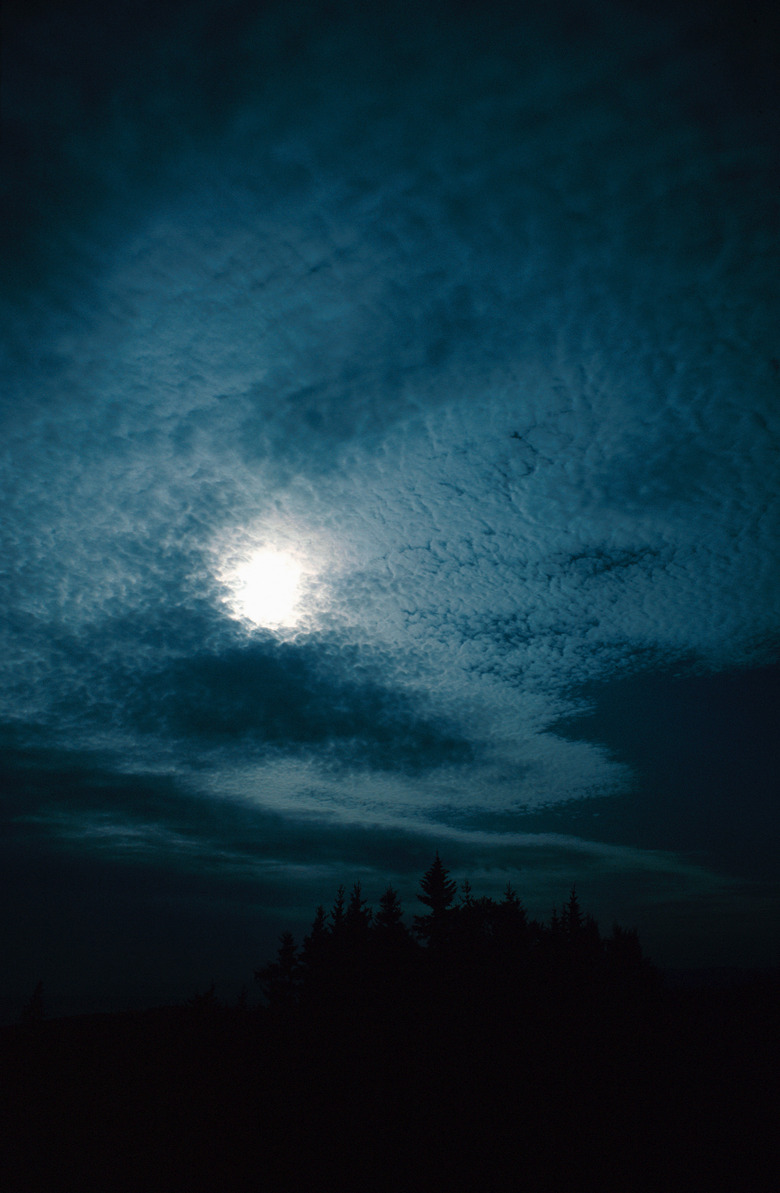Does A Moon Eclipse Affect Weather?
A solar eclipse is an altogether more spectacular event than a lunar eclipse: it darkens the daylight and has a measurable effect on the winds. A lunar eclipse, on the other hand, happens at night and lasts longer, and you can safely watch one without fear of hurting your eyes. Your view of the moon is dependent on weather conditions, however, and there isn't any evidence to suggest the eclipse affects those conditions.
How Lunar Eclipses Happen
How Lunar Eclipses Happen
While a solar eclipse happens when the moon passes between the sun and the Earth, a lunar eclipse happens when the earth passes between the sun and the moon. Because the moon must be opposite the sun for this to happen, lunar eclipses always happen on full moon nights. They don't happen every month, however. The moon's orbit is tilted relative to the Earth's orbit — or ecliptic — and each crossing of the ecliptic by the moon during its orbit is called a node. The full moon night must coincide with a lunar node for a full eclipse to happen. On average, that's about twice a year.
Types of Lunar Eclipses
Types of Lunar Eclipses
The Earth's shadow has two parts: the outer part, or penumbra, and the inner umbra. When the moon passes through the penumbra, the earth blocks part of the sun's light, but not all of it, and the effect is hardly noticeable to casual observers. When part of the moon passes through the umbra in a partial eclipse, that part becomes dark. When all of the moon is in the umbra, however, indirect sunlight filtered through the earth's atmosphere turns portions of it a variety of colors, including dark brown, red and yellow. The moon can remain in the umbra for 90 minutes or more.
Meteorological Effects
Meteorological Effects
The Supermoon of March 19, 2011 — when the full phase of the moon coincided with its closest approach to Earth — provoked warnings of apocalyptic weather conditions. Space scientist David Harland was unimpressed, however, saying the event was meteorologically insignificant. Astronomer David Reneke was also skeptical, saying that the only effect he expected to observe was exaggerated tides. The U.S. National Aeronautics and Space Administration explains that eclipses have no noticeable effect on physical life on Earth, although they have always been capable of inducing profound psychological effects. Those psychological effects may, NASA conjectures, lead to physical effects, but they probably wouldn't affect the weather.
Meteorological Effects of Solar Eclipses
Meteorological Effects of Solar Eclipses
A solar eclipse always happens within two weeks of a lunar eclipse, because the moon is still close enough to the ecliptic to block the sun. Unlike lunar eclipses, solar eclipses can produce measurable weather variations — they slow the wind down and make it change direction. This effect was verified during the 1999 total solar eclipse in southern England. Wind speed over the affected region dropped by 0.7 meters per second (1.56 miles per hour) and the wind's direction turned counterclockwise by 17 degrees. Moreover, the temperature dropped by 1 degree Celsius.
Cite This Article
MLA
Deziel, Chris. "Does A Moon Eclipse Affect Weather?" sciencing.com, https://www.sciencing.com/moon-eclipse-affect-weather-3750/. 24 April 2017.
APA
Deziel, Chris. (2017, April 24). Does A Moon Eclipse Affect Weather?. sciencing.com. Retrieved from https://www.sciencing.com/moon-eclipse-affect-weather-3750/
Chicago
Deziel, Chris. Does A Moon Eclipse Affect Weather? last modified March 24, 2022. https://www.sciencing.com/moon-eclipse-affect-weather-3750/
